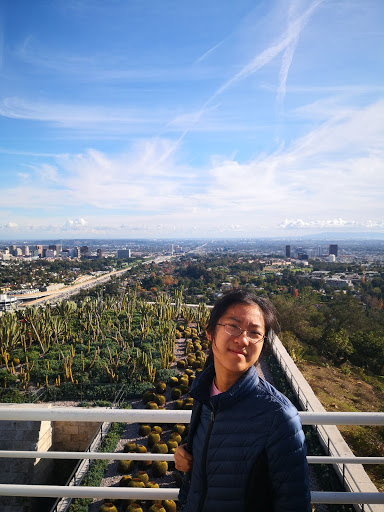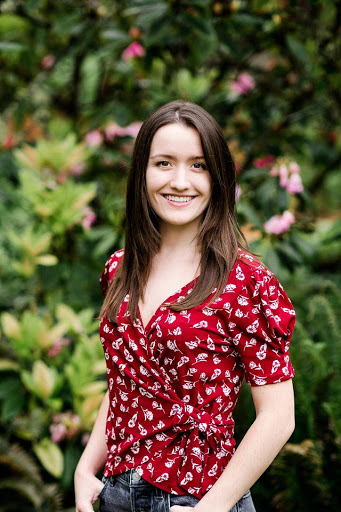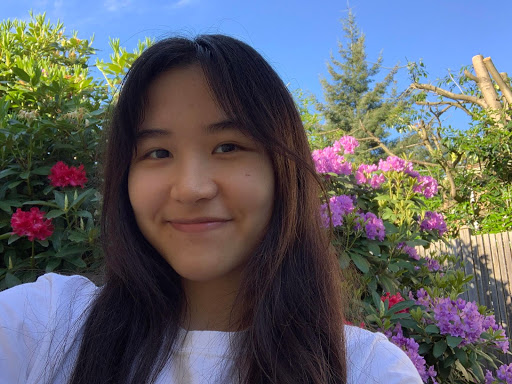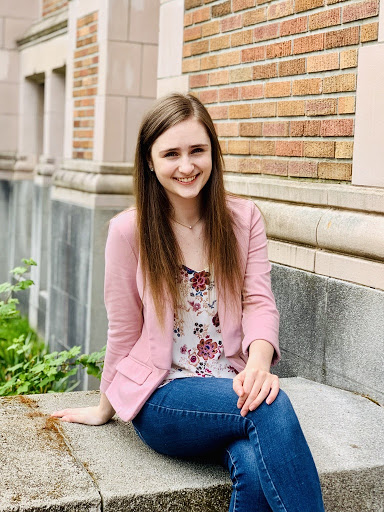Grand Prize: Upper Division Thesis
|
|
David BlynovFaculty Advisors: Rebecca Thorpe Washington State Food Banks Amid a Global Pandemic The Covid-19 pandemic has affected nearly every facet of life, most alarmingly that of food security. Scholars suggests that food security is one of the most important indicators of physical and financial wellbeing. This study examines the success rate of various food pantries across Washington State in their addressing of local food insecurities. “Success” is measured by how many households each food bank served. In order to collect this data, I individually contacted food banks across Washington State requesting them for the number of households that their pantries served between January and August of 2020. A multivariate regression model is employed in order to examine whether locality population size has a statistically significant relationship with the number of households served, controlling for other variables. ©Reproduction of this award project in part or in whole without permission of the author is expressly prohibited.
|
|
|
Conor Benjamin Geiman
Faculty Advisor: Jospeh Garbini
Improving Algae Photobioreactor Energy Efficiency Through Active Irradiance Control for Dynamic Carbon Dioxide Fixation
For my Mechanical Engineering senior capstone, I developed and experimented with a 40-liter Chlorella vulgaris algae photobioreactor testbed for carbon dioxide removal. It responds to elevated levels of carbon dioxide, while reducing energy consumption during nominal operation. Energy efficiency is important for future space missions but must be achieved without sacrificing mission safety. In my photobioreactor, the LED lighting and circulation pump account for nearly all of the system energy consumption, at 75% and 23% respectively. I reduced energy consumption by controlling the bioreactor light levels in response to varying carbon dioxide levels. Experimental results indicated that the controlled photobioreactor responds effectively to a step increase in carbon dioxide, while using up to 57% less energy on lighting than an uncontrolled photobioreactor over the course of the response. The development of a photobioreactor that responds dynamically to carbon dioxide levels is an important step to reduce overall space mission cost.
©Reproduction of this award project in part or in whole without permission of the author is expressly prohibited. |
Grand Prize: Upper Division Non-Thesis Division
|
|
Wendi ZhouFaculty Advisor: Laurie Marhoefer
Multiculturalism and Racial Conflict in Los Angeles’ “Little Bronze Tokyo,” 1941-1947
After the end of Japanese American internment, many Japanese Americans returned to their homes in LA’s “Little Tokyo” to find it nicknamed “Bronzeville.” The area had been settled by African-American migrants who moved west during the Great Migration. This podcast explores the racial tensions and multi-cultural alliances that emerged in this LA neighborhood.
©Reproduction of this award project in part or in whole without permission of the author is expressly prohibited. |
|
|
Maxwell FormanFaculty Advisor: Kristen Laidre
Who Decides? Inuit Food Sovereignty in a Changing Arctic
Inuit food insecurity in the Arctic has become a chronic issue due to colonial processes and, increasingly, climate change. While food security approaches by external forces have fallen short, Inuit peoples are finding innovative ways to reclaim their right to self-determined food. This paper argues that addressing Inuit food insecurity requires a shift away from a food security model that maintains external dependency and towards a food sovereignty model, which recognizes the historical and cultural context of food insecurity and centers Inuit autonomy. I first provide an overview of the Arctic food crisis and the current food security model operated on by non-Indigenous Arctic actors, then contrast these with Inuit-led efforts to rebuild local food systems. The last section addresses climate change and how it may influence Inuit and Western governmental negotiation of key food resources.
©Reproduction of this award project in part or in whole without permission of the author is expressly prohibited. |
|
|
Nanditha ShivakumarFaculty Advisor: Purnima Dhavan
An Assessment of the Intricacies Surrounding the Visibility of Royal Mughal Women in Visual and Written Sources During Akbar’s Reign
Royal Mughal women have played an immense role in consolidating the success and power of the Timurid-Mughal Empire. They have made significant contributions to, and influenced, several key sectors such as the Political, Commercial, and Architectural sectors, propagating the strength of the empire to great heights. They are, however, not well documented in archived sources, lending to a commonly assumed perspective of their invisibility in the empire, specifically during Emperor Akbar’s rule. This paper challenges this perceived narrative by analyzing and examining royal women’s inclusion and depiction in several primary sources, both written and visual, and evaluating the purpose and biases of such sources. This paper uses illustrations and paintings to understand the socio-cultural attitudes towards women as well as works by Akbar’s court historian Abul Fazl to understand the intricacies of documenting women to offer a new perspective on the visibility of women in the Timurid-Mughal Empire.
©Reproduction of this award project in part or in whole without permission of the author is expressly prohibited4 |
Grand Prize: Lower Division
|
|
Yuqing DengFaculty Advisor: Sarah Ghasedi
A beekeeper’s guide to Varroa destructor: dissecting its invasive nature and methods of treatment
This website explores the pathology of parasite Varroa destructor, a mite that preys on Eastern and Western honey bees, inflicting especially harmful effects in the latter host. This medium functions as a short, yet credible guidebook for beekeepers in an accessible format that will (1) introduce the V. destructor organism, (2) describe its debilitating effects on honey bees, (3) explain why this parasite is a serious problem, (4) introduce methods that are effective in controlling Varroa mites, and (5) clear up confusing or inaccurate information popular sources may echo. Explanations of beekeeping terminology are not included for conciseness as the intended audience is likely already familiar with such knowledge. However, there are those who do not take action to monitor, prevent, and/or control for mite populations in their colonies. As such, this website aims to not only inform, but also persuade beekeepers or aspiring beekeepers that V. destructor is of high-threat to honey bee welfare.
©Reproduction of this award project in part or in whole without permission of the author is expressly prohibited. |
|
|
Nicole PrivatFaculty Advisor: Sarah Ghasedi
Dams, Salmon, and Orcas
Dams are a staple in many areas, providing drinking water and hydropower to billions. But as history has shown, major alterations to the environment such as these can have unexpected results on local wildlife. This issue is presenting itself in the Salish Sea, with no other species feeling the full force of it quite like the Chinook salmon and the Southern Resident Killer Whales. Both populations have shown alarming rates of decline, with both being listed as threatened and endangered under the Endangered Species Act, respectively. This podcast explores the effects of dams on Chinook salmon and killer whales, along with the measures that can be taken to reverse the damage done to these vulnerable populations.
©Reproduction of this award project in part or in whole without permission of the author is expressly prohibited. |
 |
Alexandra KravchuckFaculty Advisor: Sarah Ghasedi
Local Protein Synthesis in Neuronal Dendrites and Its Role in Synaptic Plasticity and Memory
The biological basis of memory formation and the molecular processes which regulate it is a rapidly developing, modern topic of neuroscience research. Though many questions remain unanswered, locally synthesized proteins have been identified as a mechanism of interest. These proteins, manufactured directly in the dendrites of neurons, present the unique advantage of rapid decentralized stimulus response. As such, a proposed link exists between locally synthesized proteins and synaptic plasticity. With biophysical changes at neuronal synapses hypothesized to facilitate memory encoding, a rough biological pathway forms by which locally synthesized proteins mediate memory formation. ©Reproduction of this award project in part or in whole without permission of the author is expressly prohibited. |
Honorable Mention: Upper division, Thesis
|
|
Keely Angela HallFaculty Advisor: Gabrielle Rocap
Bleaching of Coral Reefs Due to Ocean Acidification and Warming
Climate change is impacting marine ecosystems in a multitude of ways. Consequences of greenhouse gas emissions, due to anthropogenic factors, include ocean acidification and warming. Under these conditions, corals are experiencing a reduction in calcification, loss of productivity, and bleaching due to expulsion of their symbiotic zooxanthellae. Coral degradation can collapse the entire reef ecosystem as reef fishes and invertebrates rely on reefs for habitat and food sources. Corals show variable responses and adaptation methods to bleaching. Over the past decade there has been an increase in the sea surface temperature required to initiate bleaching which implies that corals are likely already in the process of adapting to global warming. Reduction in coral coverage and diversity causes a subsequent loss of species richness, abundance, and diversity of reef fishes. These dynamic ecosystems could experience irreversible consequences if greenhouse gas emissions are not mitigated.
©Reproduction of this award project in part or in whole without permission of the author is expressly prohibited. |
 |
Sophie CarterFaculty Advisor: Adam Warrin
Days of Decision: San Francisco’s 1960 House Un-American Activities Committee Protest as a Turning Point of the New Left
After the degradation of labor union power throughout the postwar era, a new politics took hold among young Americans, and its academic roots and appeal to student demographics established the university as the new institutional mediator for left-wing activism in the 1960s. The university provided the infrastructure for college students to promote antiwar, civil rights, and civil liberties campaigns both on and off campus. Years before the major events that are tied to the New Left in American collective memory, however, Bay Area college students’ protests against the House Un-American Activities Committee garnered national media attention for their perceived radicalism in the face of repression from the federal government. Student protesters’ altercation with police at San Francisco City Hall in May of 1960 became a turning point at which the Old Left, New Left, and McCarthyism converged, providing valuable insight into the transition of broad left-wing activism from union-based to direct action protest. These student protests prompted outrage from the public and the federal government, and students across the nation soon adopted not only their protest strategy, but also the structure of the student organizations that promoted the demonstration. These protests, the first of their kind and a major precedent for what would become the student New Left movement, complicate the historical understanding of the university as the postwar institutional mediator for left-wing protest, revealing the disparities and power relations between students, professors, and administrators in the pursuit of their respective political agendas. ©Reproduction of this award project in part or in whole without permission of the author is expressly prohibited. |
Honorable Mention: Upper division Non-Thesis
|
|
Frances JohnsonFaculty Advisor: James Gregory
The Pink Scare: _The Woman Patriot_ and the Gendering of Radicalism
From 1918 to 1932, the five female directors of the Woman Patriot Publishing Company published _The Woman Patriot_ in the wake of the Progressive Era and the First Red Scare. The newspaper emerged as an active voice in the countermovement against women’s suffrage. Despite the anti-suffragists’ efforts, the 19th Amendment’s enfranchisement of women moved women from the private to the public sphere. _The Woman Patriot_ adapted and continued their conspiratorial association of feminism and radicalism. This paper applies resource mobilization theory and political opportunity theory to the strategies of _The Woman Patriot_. While the Woman Patriot Publishing Company ultimately fell out of alignment with its political coalition, its accomplishments complicate the historical understanding of the waning of maternalist reform and the Equal Rights Amendment, and the waxing of female conservatism.
©Reproduction of this award project in part or in whole without permission of the author is expressly prohibited. |
 |
Juan Granados BorregueroFaculty Advisor: Ann C. Huppert
Studies in 16th Century Construction Project Management: San Lorenzo de El Escorial and San Pietro in Vaticano
Through the juxtaposition of two key 16th-century architectural landmarks: the Monastery of El Escorial and the Basilica of Saint Peter, I examine the conditions under which the building projects were managed. Architectural history studies the evolution of design canons, while construction history focuses on materials and on technological advancements. In this project, I bridge the gap between the two disciplines, and investigate the procurement of labor and materials, the project management practices of the time (such as types of contracts, organizational hierarchy, worker’s schedules), and how the geopolitical contexts of both buildings affected the course of construction and the lives of workers.
©Reproduction of this award project in part or in whole without permission of the author is expressly prohibited. |
 |
Finn ManderFaculty Advisor: Kristen Laidre
Facing Climate Change: The Case of the Arctic Tern (Sterna paradisaea)
Arctic seabird populations have been on the decline in recent decades, yet a clear cause has not been identified. The Arctic tern (Sterna paradisaea) provides a unique opportunity for evaluating the potential of climate-related changes in causing seabird declines due to its 50,000 km annual migration between the northern and southern poles. This paper discusses climate change as it relates to five predominant areas of the Arctic tern life history (habitat, migration, diet, reproduction, and predation) in order to ascertain the future of Arctic seabirds.
©Reproduction of this award project in part or in whole without permission of the author is expressly prohibited. |
Honorable Mention: Lower Division
Population Health Award
|
|
Emma FinkelFaculty Advisor: Sarah Ghasedi Seaweed’s Ability to Mitigate Climate Change
Climate change is a pressing issue that affects every organism on the planet. This essay and book define and explore the effects of climate change and seaweed’s ability to help mitigate the problem. The research essay expands on seaweed’s capacity to become a biofuel, sequester carbon dioxide, reduce livestock methane emission, be used in pharmaceuticals, and produce oxygen. The essay also mentions the underutilization of seaweed’s benefits in domestic and international governmental policies. The picture book is aimed at children 5-8 years old and their parents. The book follows young Maureen as she discovers sea levels rising and displacing her from her home. Maureen is also on a mission to learn what she, and every other young child, can do to resist climate change. If children understand climate change and the positive impacts of seaweed early, they can apply this information throughout adulthood and implement it into society.
©Reproduction of this award project in part or in whole without permission of the author is expressly prohibited. |
 |
Masen WestlingFaculty advisor: Hollis Miller
Environmental Activism in Warren County, North Carolina
The modern environmental justice movement has stemmed from the activism that took place in Warren County, North Carolina following the decision to construct a toxic waste landfill in a majority black and low-income community. This contributed to the historically unjust political decisions and lack of regulation that has targeted vulnerable populations and forced them to suffer the detrimental health impacts as a result of private and federal company’s actions. The activism that took place in the 1980s-90s influenced social and political reform by drawing national attention to the issue of environmental racism. While the United States has come a long way since Warren County, there is still injustice and discrimination that must be addressed in order to protect the health and wellbeing of unprotected and underrepresented communities. ©Reproduction of this award project in part or in whole without permission of the author is expressly prohibited. |
|
|
Lauren HolbrookFaculty advisor: Megan Mcloskey
Doctors Without Disability Awareness: The Role of Medical Training in a Profound Healthcare Barrier for People with Disabilities
People with disabilities (PWD) constitute the largest minority group in the United States. An estimated 1 in 4 adults live with a disability. As the population of PWD grows, medical staff must meet their unique needs and provide the equitable, accessible, quality care afforded by their rights. To inform the development of disability-inclusive medical training standards, this review highlights physician bias as a profound barrier to healthcare for PWD. The vague cultural competency standards set by The United States Liaison Committee on Medical Education lead to inconsistent, inadequate, and, sometimes, nonexistent disability awareness training. Consequently, physicians are ill-equipped to recognize prejudice or systemic bias that views disability as an individual tragedy to be fixed or cured. Ultimately, healthcare disparities for PWD and evidence of physicians’ and students’ negative attitudes reveal the state of medical education in the United States, demonstrating the crucial role medical training plays in promoting equitable healthcare. ©Reproduction of this award project in part or in whole without permission of the author is expressly prohibited. |
|
|
David BlynovFaculty Advisor: Rebecca Thorpe
Washington State Food Banks Amid a Global Pandemic
The Covid-19 pandemic has affected nearly every facet of life, most alarmingly that of food security. Scholars suggests that food security is one of the most important indicators of physical and financial wellbeing. This study examines the success rate of various food pantries across Washington State in their addressing of local food insecurities. “Success” is measured by how many households each food bank served. In order to collect this data, I individually contacted food banks across Washington State requesting them for the number of households that their pantries served between January and August of 2020. A multivariate regression model is employed in order to examine whether locality population size has a statistically significant relationship with the number of households served, controlling for other variables.
©Reproduction of this award project in part or in whole without permission of the author is expressly prohibited. |











